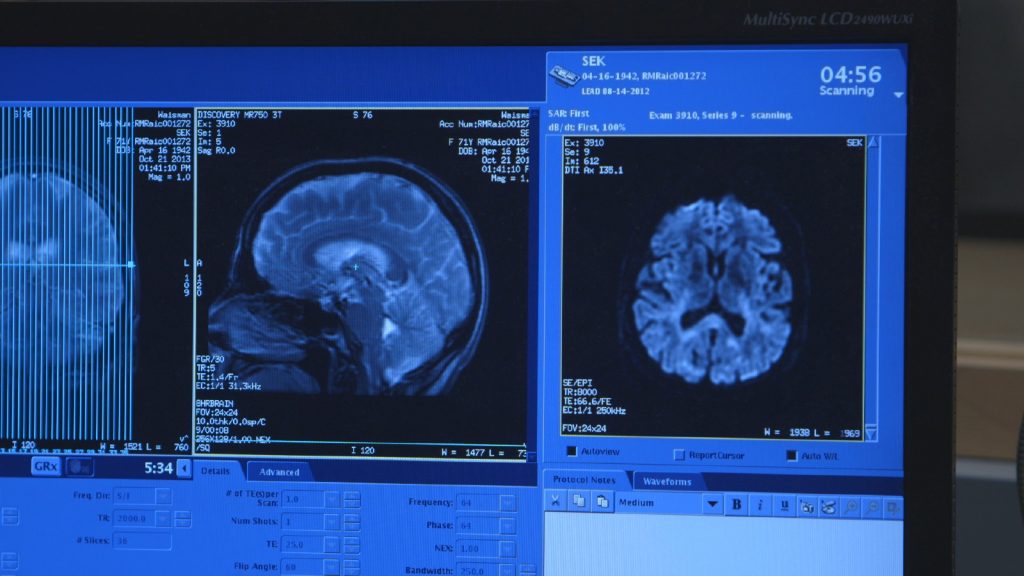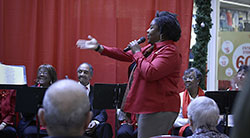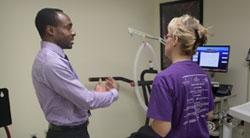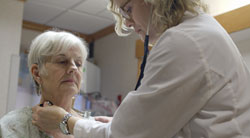Research Scientists

In the University of Wisconsin Hospital, a team of neuroscientists regard their human subjects as more than flesh and blood. Every detail of their lives is valuable to understand. How have they been sleeping? Are they under stress? What’s new in their health and lives? The team’s principal investigator, Dr. Sterling Johnson, examines brain images from volunteers’ MRI and PET scans to spot the earliest evidence of change. Dr. Cynthia Carlsson draws spinal fluid to inspect it for beta amyloid protein, tau, and other markers of the disease. She compares her findings with Dr. Johnson’s data. The study gathers and correlates statistics on blood pressure, cholesterol, heart function, insulin resistance, genetic risk factors, and – most importantly – cognitive function.
Dr. Ozioma Okonkwo adds biological data from participants’ aerobic fitness tests as part of his new study to figure out the connection between exercise and brain health. These scientists have worked their way to their positions of inquiry, and now they mentor the next generation – including grad student hopeful Stephanie Schultz. Along with many esteemed colleagues, research nurses, lab technicians, data analysts, and students, the WRAP team documents the evidence, connects findings, and moves closer to a bigger picture.
Meanwhile, Gina Green-Harris who heads up the Milwaukee office for the WRAP study, is trying to help solve the problem of the lack of diversity in study participants. African Americans are up to twice as likely to get the disease as Caucasians; but they are reluctant to enroll. She reminds the scientists about the sinister history of research on black Americans. There are so few black volunteers, Gina says, because recruiters don’t “know how to ask (knowledgeably and respectfully).” Gina forms a Community Advisory Board. Besides being a watchdog, these black Milwaukeeans bring new humanistic perspectives to the disease that extend beyond research. For example, they form a choir made up of people with Alzheimer’s and their caregivers. When the choir sings in public, not only is it a joy for them, but it shows how to live openly with dementia – without stigma.




Help us finish the film DETERMINED